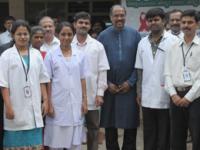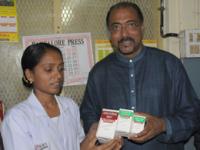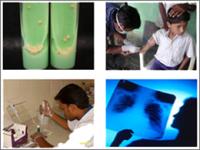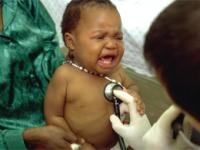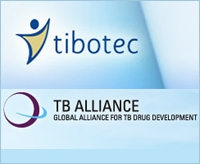
The comic book Luis Figo and the World Tuberculosis Cup seeks to teach children and teens about tuberculosis, its relationship with HIV, and how to prevent it.
International football icon and Stop TB Ambassador Luis Figo is the main character of an educational comic book that provides key information on tuberculosis (TB). Luis Figo and the World Tuberculosis Cup was produced by the Stop TB Partnership, an international health partnership whose secretariat is housed by the World Health Organization (WHO) in Geneva, with support from UNAIDS.
The comic book features Figo as the captain of a team of teen-aged girls and boys. Together they win a football match against a squad of tuberculosis germs. The comic book seeks to teach children and teens about tuberculosis, its relationship with HIV, and how to prevent it.
Tuberculosis is a killer, and I want all of you to stay safe from it. I am passing the ball to you -- you can help reach the goal of stopping tuberculosis.
International football icon and Stop TB Ambassador Luis Figo
In a statement released on the occasion of the launch Figo urged young people everywhere to take the comic book's messages seriously. "Tuberculosis is a killer, and I want all of you to stay safe from it. I am passing the ball to you -- you can help reach the goal of stopping tuberculosis," he said.
The book is available in Arabic, Chinese, English, French, Khmer, Kiswaili, Hindi, Portuguese, Russian, and Spanish and is being distributed in several countries in collaboration with local partners. An estimated number of 70 000 comic books have been so far distributed through country-based events. The comic book is also available for download at www.stoptb.org/figo
An international competition for comic artists to design the educational book was launched in 2008. A jury of cartoon experts from worldwide organizations together with representatives from UN organizations selected the winning proposal which was presented in Lisbon on 24 July 2008.

HIV and TB are so closely connected that they are often referred to as co-epidemics or dual epidemics.
The comic book has now become an animated cartoon that will be launched in Geneva on 13 June during the All Stars '09, a charity match organized by the Luis Figo Foundation. The animated cartoon version of Luìs Figo and the World Tuberculosis Cup will be shown in its French-language version at the gala match. It will soon also be available in Arabic, English, Portuguese, Russian and Spanish and broadcast widely around the world.
The fundraising game will take place at the Stade de Genève and will also feature current and former soccer stars and trainers including Mourinho, Chistian Chivu, Ronaldinho, Clarence Seedorf, Fabio Capello, Giovanni Trapattoni and Giga Popescu.
Tuberculosis and HIV
TB is the leading causes of death among people living with HIV, and accounts for an estimated 23% of AIDS deaths worldwide. HIV and TB are so closely connected that they are often referred to as co-epidemics or dual epidemics. The epidemics drive and reinforce one another: HIV activates dormant TB in a person, who then becomes infectious and able to spread the TB bacillus to others.
Untreated, someone with active tuberculosis will infect an estimated 10 to 15 people per year. The Stop TB Strategy is the internationally recommended standard for preventing, diagnosing and treating TB and includes recommendations for managing TB in people living with HIV.
Recently a new TB strain, extensively drug resistant TB (XDR TB), has emerged, which is particularly dangerous for people living with HIV in whom it is frequently fatal. Preventing the development and spread of drug resistant TB through greater investment in TB services, improved community case finding and adherence support, and more effective infection control are essential.
UNAIDS, the Stop TB Partnership and the World Health Organization (WHO) are together encouraging a concerted, coordinated global effort to control TB in people living with HIV. In addition, the Stop TB Partnership has formed the TB/HIV Working Group, which develops global policy on the control of HIV-related TB and advises on how those fighting against TB and HIV can work together.
These partnerships have led to the creation of policies and guidelines to deal with HIV-related TB, and countries and organizations have taken important steps towards integrating their HIV and TB responses.




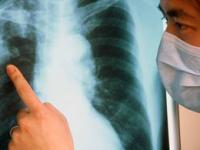 Preventing people living with HIV from dying of tuberculosis is one of the 10 priority areas outlined in the UNAIDS Outcome Framework for the period 2009-2011. Credit: UNAIDS/P.Virot
Preventing people living with HIV from dying of tuberculosis is one of the 10 priority areas outlined in the UNAIDS Outcome Framework for the period 2009-2011. Credit: UNAIDS/P.Virot




